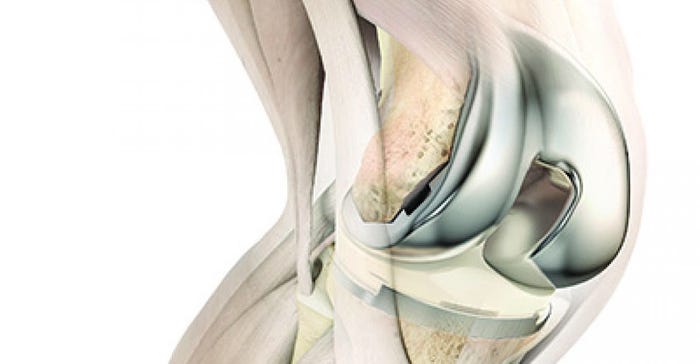Johnson & Johnson's third-quarter earnings suggest that orthopedic surgeons are prioritizing hips over knees as they work through their COVID-related backlog.
October 13, 2020

The hips don't lie, as Shakira might say.
Johnson & Johnson's third-quarter earnings suggest that orthopedic surgeons in the United States are prioritizing hips over knees as they work through their COVID-related backlog of surgical cases. The company's U.S. hips business grew 8.7% in the quarter (compared to Q3 2019), while the knee market is recovering at a slower pace.
On the bright side, J&J said performance in the knees business was boosted by the continued success of products like Attune revision and cementless knee replacements. J&J's DePuy Synthes introduced the Attune Knee in 2013, touting that the product provides a better range of motion and addresses the unstable feeling some patients experience during everyday activities. Last year, the company expanded the platform by introducing the Attune Cementless Knee. That launch combined the benefits of the Attune Knee with DePuy Synthes’ extensive heritage in rotating platform knees and cementless technology. The company noted at the time that demand for cementless knee replacement was increasing, specifically for younger, more active patients for whom biological fixation and in-growth of the implant to bone may help meet the demands of their active lifestyle.

Another bright spot in J&J's third-quarter report, as it relates to the medical device business, is that the company submitted a 510(k) application in September for its Velys Orthopedic Robotic system for use in total knee replacement surgery.
Overall, J&J's medical device business has struggled in recent years, and the company has even faced some pressure to spin off its medical device segment.
"So as we've been talking about medtech, really, we've been on this three-year improvement journey, and we are demonstrating progress with growth year-over-year from 1.5% in 2017 to 3.9% in 2019," said Ashley McEvoy, executive vice president and worldwide chair of medical devices at J&J. "While COVID temporarily interrupted this progression, our results this quarter demonstrate that in addition to the overall market recovery, the strategic choices we've made to strengthen our competitiveness, and our relentless focus on customers and patients are working."
Looking ahead, McEvoy said there will still be some near-term uncertainty around patient willingness to undergo an elective procedure during the pandemic, and affordability of healthcare.
"However, when I look at the end markets overall in medtech, I continue to be optimistic as there's still unmet clinical need to be met," McEvoy said during J&J's earnings call on Tuesday, as transcribed by Seeking Alpha.
Given what the company currently knows about the pandemic's impact on the business in 2020, McEvoy said she expects the medical device business to deliver robust double-digit operational growth in 2021. She later clarified that she does anticipate growth in 2021 relative to where the business exited 2019, not just relative to 2020.
"We think the dispersion between hip and knee performance is driven by procedural prioritization towards hip replacements over knee replacements, which are more deferrable," Ryan Zimmerman, a medtech analyst at BTIG, noted in a report Tuesday.
The analyst also pointed out that even though the knee replacement market has recovered more slowly than the hip replacement market, the combination of a stronger domestic recovery and J&J's knee performance should benefit both Stryker and Zimmer Biomet, which he said are likely taking some share within the U.S. knee replacement market.
About the Author(s)
You May Also Like




